Progress on Chiron Gate has been slower than I’d have liked, both because other things have gotten in the way and because the work I’ve done on it has been more challenging than I’d expected. But I’ve made enough progress for another progress report and preview version.
Most of my work on the game since the last report has been on the modelling of planets and how the game triggers events when you explore them.
Traits and secret traits
Planets now have some traits that are visible from orbit, and some secret traits that are revealed when you land and explore. In most cases, for each visible trait there are several secret traits that could be behind it.
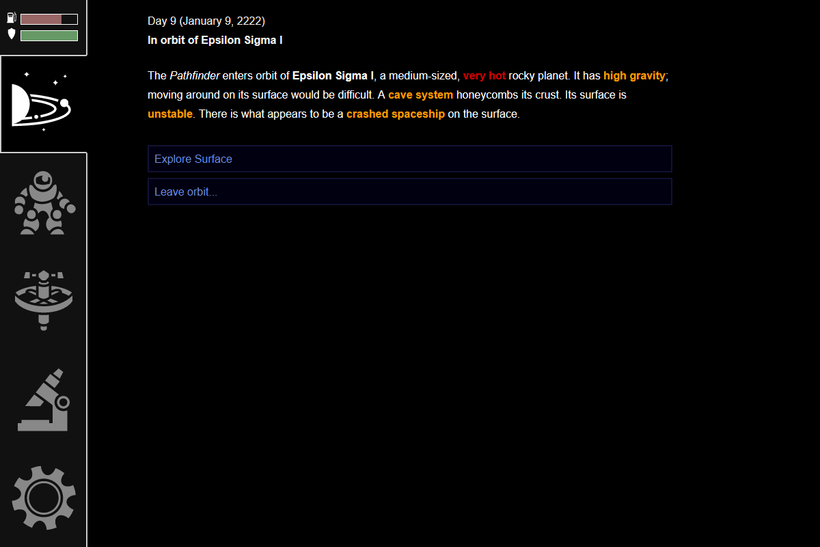
For example, you might see from orbit that a planet has a surface covered in salt. Exploring the surface might reveal that the planet used to be covered in an ocean that boiled away, leaving only the salt…or you might find the salt is there for some other reason.
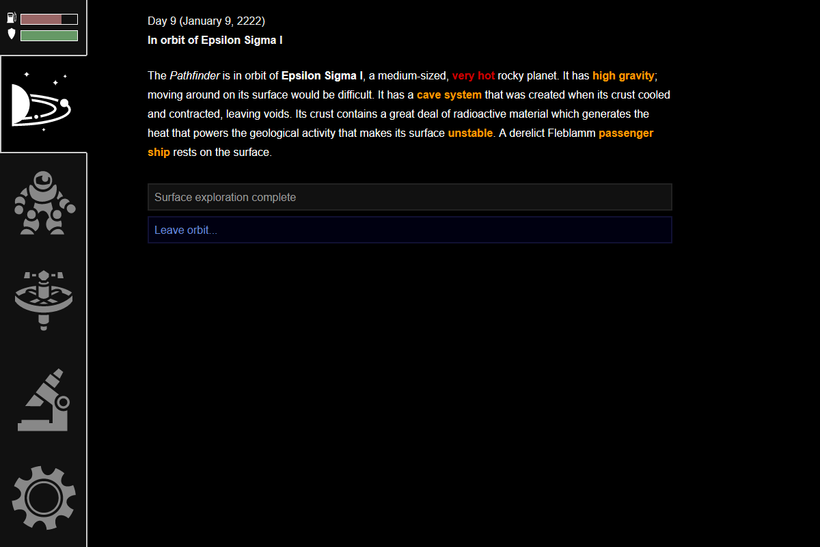
I’m focusing on terrestrial planets for now. Gas giants, minor planets, and asteroid belts will eventually have their own content based on the same system.
More interactive planet exploration
After you land on a planet, you now get a list of things you can explore, and you can pick them in any order. For example, on our salt-covered planet, the salt would be one of the things you can pick from to explore; others might include caves or possible structures.
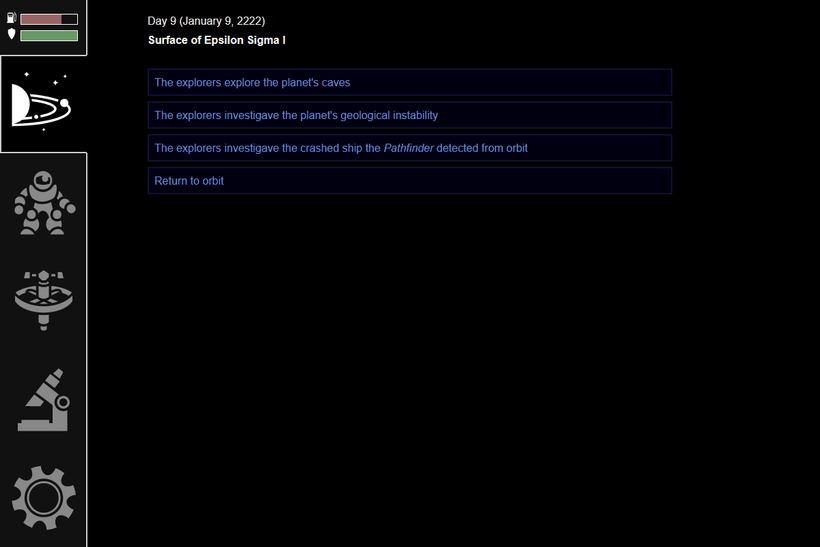
Every time you select an exploration task, there’s a chance you’ll get a hazard that you’ll have to resolve before you can do the exploration.
This more complex planet trait system and the ability to pick which traits to explore replaces the anomaly system, which I’ve removed.
Ancient aliens
Sometimes, investigating one of a planet’s traits will reveal that it’s due to alien meddling. For example, it might turn out that that salt isn’t due to the ocean naturally boiling away, but due to aliens stealing all the water.
Aliens can also have left more obvious signs, such as crashed ships. Investigating ships, colonies, and certain other things can reveal information about the aliens that built them. This is pretty simple at the moment: each civilisation has a list of traits, and sometimes you’ll discover one of these traits. A civilisation’s traits will also effect which kinds of ruins they leave (e.g. a warlike race is likely to leave crashed warships).
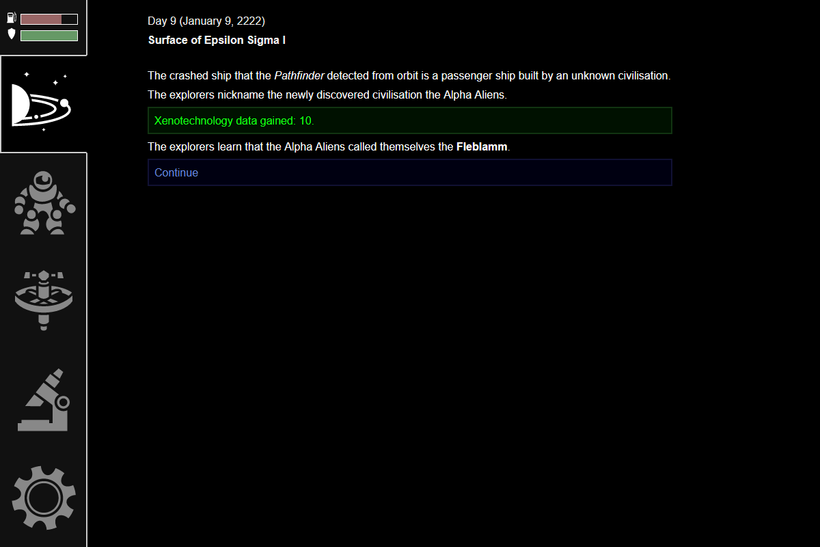
For now, the only aliens in the game are extinct interstellar civilisations which might have done things like terraform planets and leave colonies, but in the future I’ll extend this system to include civilisations that are native to a planet, still around, or both. (The only living alien life you can currently find is non-intelligent, and will sometimes try to eat you.)
More events
Based on the systems above, I’ve added many more planet exploration events. There’s still a lot more to add, and some of the ones I’ve added need to be fleshed out, but the game is starting to feel like it has enough content to be interesting.
Improved system view
The system view now has an icon to show you where your spaceship currently is. A pretty small change but it makes a lot of difference to how the game feels!
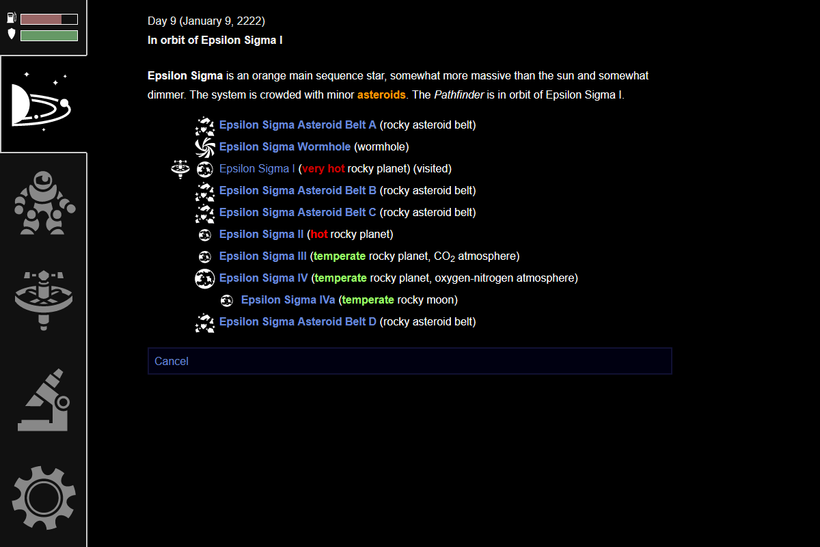
The system view now also shows each planet’s temperature. This is important as you’re likely to want to focus your exploration on planets in the liquid water zone, which are the ones most likely to have (or have had) life.
Each system’s wormhole now appears like a planet in the system view. In order to get back to Chiron Base you need to travel to the wormhole first.
That’s all for now. Thank you for your support, and I’ll let you know when I’ve made some more progress!
